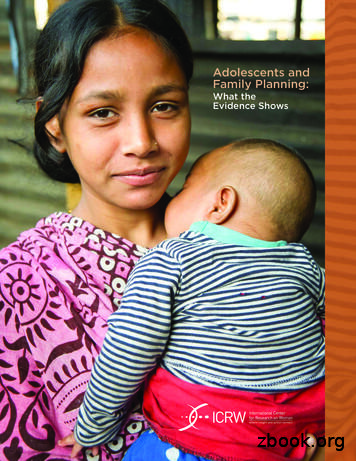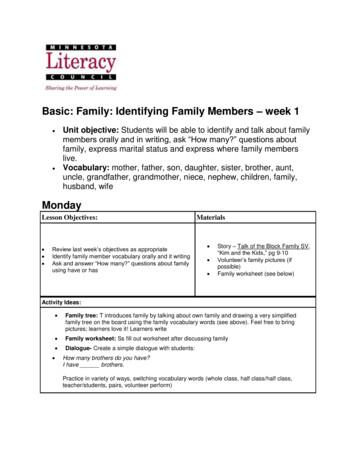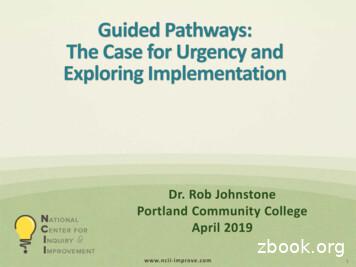Integration Of Family Planning With Immunization Services - FHI 360
Integration of Family Planning with Immunization Services: A Promising Approach to Improving Maternal and Child Health Both immunization and family planning save lives. Through family planning, couples can achieve healthy timing and spacing of pregnancies. At the same time, immunizations are one of the most effective and well utilized child-health promotion strategies globally. The recommended vaccination schedule for children allows for multiple health care contacts with infants and their mothers during the first year of life. Although evidence is limited, providing family planning information and/or services to postpartum women during their infants’ immunization visits may be an effective way to reach women with high unmet need for family planning. Why Make Family Planning Services for Postpartum Women a High Priority? Postpartum women have a high unmet need for family planning. During the extended postpartum period (12 months after birth), most women want to delay or avoid future pregnancies but are not using a modern contraceptive method. A review of data from 27 Demographic and Health Surveys (DHS) found that 67 percent of women who gave birth within the previous year had an unmet need1 for family planning.2 Pregnancies spaced too closely together can pose serious health risks. Pregnancy intervals shorter than 18 to 24 months have been associated with an increased risk of preeclampsia; preterm birth; low birth weight; and fetal, early neonatal, and maternal deaths.3,4,5 Recent research indicates that 35 percent of deaths among children younger than five in developing countries could have been avoided if births had been spaced at least 36 months apart.6 Why Are Immunization Services a Promising Platform to Reach Postpartum Women with Family Planning? Broad reach. Use of modern contraceptive methods has traditionally been low in many settings, but a majority of women seek immunization services for their children. In 2008, immunization coverage reached 80 percent in Africa and 84 percent in Southeast Asia (as measured by the estimated delivery of DTP3—the third dose of the diphtheria, pertussis and tetanus vaccine).7 Immunization programs include more than 500 million regular contacts annually, with the goal of achieving uniformly high coverage among all population segments, regardless of wealth, sex, or location. Multiple and timely opportunities to reach postpartum women. Through infant immunization visits, mothers have multiple contacts with health care providers in the year after their children are born. The recommended routine immunization schedule calls for vaccinations at birth, 6 weeks, 10 weeks, 14 weeks and 9 months.8,9 The 12 months following birth is a time period when women may be highly receptive to messages about family planning, as was demonstrated in a survey of postpartum women in Madagascar.10 The ability for mothers to receive resupply of contraceptives at the time of DPT2 and DTP3 contacts may provide an added incentive for mothers to return to the clinics on schedule.
A Promising Approach Integration of Family Planning with Immunization Addresses Immunization Strategy Developed by United Nation Agencies The Global Immunization Vision and Strategy (GIVS) for 2006-2015 was developed by the World Health Organization (WHO) and the United Nations Children’s Fund (UNICEF) to help increase immunization coverage worldwide. One of the four main GIVS components is “to integrate other critical health interventions with immunization.” Increased overall health impact. Some countries in Africa and Asia—even where immunization coverage exceeds 70 percent—still have some of the world’s highest rates of mortality for children under age five. Using immunization programs as a platform for the delivery of other services demonstrates the value of immunization while also encouraging potential additional support for strengthening delivery of quality health services. Currently, 1.2 million infant deaths are averted globally each year by preventing unintended pregnancies, and another 640,000 newborn deaths would be prevented if all women desiring contraception could be served.11 Thus, reaching postpartum women with family planning services can contribute to achieving broader child health goals. How Can Family Planning and Immunization Services Be Integrated? Programs and researchers are currently considering two approaches12 to integrating family planning into immunization services: n n Linked referrals. Mothers receive information and referrals for family planning during child immunization visits. Integrated routine delivery. Family planning services (including provision of contraceptive methods) are offered during routine child immunization contacts at fixed clinics or during routine outreach services (by immunization or other providers). Immunization services should be sufficiently robust and reliable before adding family planning. Moreover, political and community support must be sustained for both services, providers must have appropriate training, and family planning services of good quality should be available.13 With both models of integration, concerns may need to be addressed regarding stigmatization, rumors, or community resistance to 2 family planning which could negatively impact immunization programs.14 What Evidence Exists about Integration of Family Planning into Immunization Services? Little research evidence exists regarding the effectiveness of integrating family planning into immunization services. The most relevant study was completed in Togo in the 1990s. There researchers found that incorporating a simple family planning message and referral during immunization visits was associated with a 54 percent increase in the average number of new family planning acceptors per month (initiating use of oral contraceptives, injectables, or the intrauterine device). Adding family planning referrals did not negatively affect the number of immunization consultations provided, and staff reported feeling that the inclusion of the family planning referrals was appropriate and beneficial.15 More recently, pilot projects in Madagascar, Mali, Pakistan, the Philippines, Rwanda, and Zambia have integrated family planning into immunization programs with some success. In an urban area in Mali, for example, family planning providers offer intrauterine devices and implants during immunization clinics. Data from the project suggest that 12 to 15 percent of women actively seek and receive long-acting methods during these contacts.16 FHI, through its PROGRESS project, and the Maternal and Child Health Integrated Program (MCHIP) are compiling experiences from these and other pilot projects. More research is needed for stakeholders to agree upon how the two services are best linked and to understand the acceptability and impact of integration on both family planning and immunization services. A recent literature review found that few studies of integrated health care services in
A Promising Approach Questions on Integration: How to Move Forward Recognizing that the overall goals of immunization and family planning programs are mutually supportive and that both services are valuable parts of an integrated maternal and child health system, a group of experts working on USAID-funded immunization and family planning projects convened in December 2009. The group identified key questions that need to be addressed: 1. In what settings should a referral for family planning services be offered during immunization services? When can contraceptive methods be offered during routine fixed or outreach immunization contacts? When can immunizations be offered as a part of family planning programs? 2. Do immunization providers have adequate time and training to deliver key family planning messages? 3. Are new incentives, supervision systems, and monitoring and evaluation mechanisms needed for this approach to integration? 4. Child nutrition, HIV, malaria prevention, and other health programs are also considering ways to link with immunization programs. What needs to occur to ensure that immunization services are not overwhelmed or diluted? 5. Will integration of these services increase or reduce stress for countries that face significant human resource challenges? 6. What provider skills are needed to implement an integrated service? How would this differ based on context and type of services offered? 7. What level of functionality must an immunization program have before integration with family planning services is attempted? 8. How can we ensure that more women are reached with family planning services, especially underserved and poor populations, through an integrated approach? Are women who seek immunization services for their children more likely to use family planning services than those who do not? 9. Does an integrated approach pose any risks for immunization programs? Or for family planning programs? How can these be addressed? 10. Will integration of family planning and immunization be a sustainable model? How can costing be incorporated into evaluation efforts? 11. How can increased demand generated for family planning through an integrated approach be met? 12. How can community, political, and donor support for integration of family planning and immunization services be generated and sustained? middle- and low-income countries have been carried out.17 Some research on integrating family planning with immunization is currently under way. For example, FHI is conducting research in collaboration with the ministries of health of Ghana, Rwanda, and Zambia, with funding from the U.S. Agency for International Development. These projects are investigating whether delivering a simple message about family planning to postpartum women during routine child immunization visits will increase contraceptive use among mothers by the time their children receive the measles vaccine (given at 9-12 months). At the intervention sites, immunization providers are using a job aid to inform mothers when their fertility will likely return, based on the lactational amenorrhea method (LAM) criteria.18 All women are told that pregnancy spacing is important for their health and their 3
A Promising Approach children’s health. Women who are at risk of unplanned pregnancy are referred to a family planning clinic located at the same site. Other women are instructed to seek family planning services when their fertility is likely to return if they want to delay or limit future births. The primary outcome of interest is the rate of family planning use among women 9 to 12 months postpartum at the intervention sites compared to control sites. Results from Ghana and Zambia will be available in the summer of 2010. References Improve Integrated Health Care Delivery with Systematic Screening Systematic screening, which has been identified as a best practice by USAID and other partners, allows providers to identify which services a client wants or needs rather than simply providing the service the client initially requests. Providing multiple services to a client during one visit can improve health by addressing various unmet needs. For more, see Introducing Systematic Screening to Reduce Unmet Health Needs at: http://www.popcouncil. org/pdfs/frontiers/Manuals/ SystematicScreening.pdf. 4 1 Generally, people are considered having unmet need for contraception if they are sexually active, are not currently using a method to prevent pregnancies (or their partner is not using a method), but they do not want a pregnancy/baby for at least two years. 2 Ross JA, Winfrey WL. Contraceptive use, intention to use and unmet needs during the extended postpartum period. Int Fam Plann Perspect 2001;27(1):20-7. 3 Conde-Agudelo A, Rosas-Bermúdez A, Kafury-Goeta AC. Birth spacing and risk of adverse perinatal outcomes: A meta-analysis. JAMA 2006;295(15):1809-1823. 4 Conde-Agudelo A, Rosas-Bermúdez A, Kafury-Goeta AC. Effects of birth spacing on maternal health: a systematic review. Am J Obstet Gynecol 2007;196(4):297-308. 5 Cecatti JG, Correa-Silva EP, Milanez H, et al. The associations between inter-pregnancy interval and maternal and neonatal outcomes in Brazil. Mat Child Health J 2008;12(2):275-81. 6 Rutstein, SO. Effects of preceding birth intervals on neonatal, infant and under-five years mortality and nutritional status in developing countries: evidence from the Demographic and Health Surveys. Int J Gynaecol Obstet 2005;89 Suppl 1:S7-S24. 7 World Health Organization. WHO Vaccine-Preventable Diseases: Monitoring System. Geneva: WHO, 2009. http:// whqlibdoc.who.int/hq/2009/WHO IVB 2009 eng.pdf. 8 World Health Organization. Catalogue of Immunization Policy Recommendations. Geneva: WHO, 2010. http://www. who.int/immunization/policy/en/. 9 IMMUNIZATIONbasics. More juice from the squeeze: Linking immunization services with other health interventions. SnapShots. 2007:5. http://www. pshots volume5.pdf. 10 Dulli L, Green M, Katz K. Increasing Access to Postpartum Family Planning Services in Madagascar: Assessing the Feasibility and Acceptability of Immunization Services as an Entry Point to Family Planning. Research Triangle Park, NC: Family Health International, Madagascar Ministry of Health and Family Planning, and Madagascar Institute of Public and Community Health, 2010. 11 Singh S, Darroch JE, Ashford LS, et al. Adding It Up: The Costs and Benefits of Investing in Family Planning and Maternal and Newborn Health. New York: Guttmacher Institute, 2009. http://www.unfpa.org/public/publications/ pid/4461. 12 A third approach would involve integrating family planning referrals and/or method provision during mass immunization campaigns. Integration into immunization campaigns has been used successfully with the provision of other health services such as vitamin A capsule and insecticide-treated bednet distribution. However, it is unlikely to be successful with integration of family planning because such campaigns often occur episodically and are highly donor-dependent and disease/commodityspecific, while family planning provision requires counseling, resupply of methods, and follow-up care. 13 Wallace A, Dietz V, Cairns KL. Integration of immunization services with other health interventions in the developing world: what works and why? Systematic literature review. Trop Med Int Health 2009;14(1):11-19. 14 Milstien J, Griffin DP, Lee JW. Damage to immunization programmes from misinformation on contraceptive vaccines. Reprod Health Matters 1995;3(6)24-8. 15 Huntington D, Aplogan A. The integration of family planning and childhood immunization services in Togo. Stud Fam Plann 1994;25(3):176-83. 16 Population Services International. Reaching Women in Need of Family Planning at Clinic Immunization Days. N.d. http://www.psi.org/sites/default/files/publication files/ Mali%20Case%20Study%20LETTER%20SIZE%20PAGES.pdf. 17 Briggs CJ, Garner P. Strategies for integrating primary health services in middle- and low-income countries at the point of delivery. Cochrane Database of Syst Rev 2006;(2):CD003318. 18 The criteria for LAM are: 1) a mother’s menses have not returned; 2) the woman is fully or nearly fully breastfeeding; and 3) her baby is less than six months old. 2010 by FHI This work is made possible by the generous support of the American people through the U.S. Agency for International Development (USAID). The contents are the responsibility of FHI and Maternal and Child Health Integrated Program and do not necessarily reflect the views of USAID or the United States Government. For more information, please contact: Information Programs FHI P.O. Box 13950 Research Triangle Park, NC 27709 USA Tel: 1.919.544.7040 Fax: 1.919.544.7261 E-mail: progressinfo@fhi.org
In July 2011, FHI became FHI 360. FHI 360 is a nonprofit human development organization dedicated to improving lives in lasting ways by advancing integrated, locally driven solutions. Our staff includes experts in health, education, nutrition, environment, economic development, civil society, gender, youth, research and technology – creating a unique mix of capabilities to address today’s interrelated development challenges. FHI 360 serves more than 60 countries, all 50 U.S. states and all U.S. territories. Visit us at www.fhi360.org.
Family Planning Services in Madagascar: Assessing the Feasibility and Acceptability of Immunization Services as an Entry Point to Family Planning. Research Triangle Park, NC: Family Health International, Madagascar Ministry of Health and Family Planning, and Madagascar Institute of Public and Community Health, 2010.
Catan Family 3 4 4 Checkers Family 2 2 2 Cherry Picking Family 2 6 3 Cinco Linko Family 2 4 4 . Lost Cities Family 2 2 2 Love Letter Family 2 4 4 Machi Koro Family 2 4 4 Magic Maze Family 1 8 4 4. . Top Gun Strategy Game Family 2 4 2 Tri-Ominos Family 2 6 3,4 Trivial Pursuit: Family Edition Family 2 36 4
Integration EMR/EHR Integration "Healthcare data exchange platform" "Data extraction and interoperability" "Data integration for healthcare" "EHR-specific, cloud-based interface engine" "EHR integration and third-party developer marketplace" "EMR integration to software products" "Specific EHR integration for HL7
Integration from SAP Ariba Different integration options 1. Ariba Network integration -Standard integration between SAP S/4HANA and SAP ERP with Ariba Network solutions 2. SAP Ariba Applications integration -Standard integration between SAP S/4HANA OP and SAP ERP with SAP Ariba Applications that cover the entire source-to-settle process 3.
family planning information and services. All of these studies used experimental or quasi-experimental methods. While not every study focused specifically on adolescents and family planning (i.e., some included family planning for adults or primarily addressed HIV prevention), all included some level of attention to adolescent family planning in-
Figure 3. Important Considerations for Family Planning in the PHC Service Delivery Components The government believes that integrating family planning with PHC will increase family planning coverage and improve overall population health. Malawi has made progress in creating and meeting demand for family planning, but it has a long way to
Story – Talk of the Block Family SV, “Kim and the Kids,” pg 9-10 Volunteer’s family pictures (if possible) Family worksheet (see below) Activity Ideas: Family tree: T introduces family by talking about own family and drawing a very simplified family tree on the board using the family vocabulary words (see above). Feel free to bring
Gateway Math & English Completion in 1. st. . FAMILY FEUD FAMILY FEUD FAMILY FEUD FAMILY FEUD FAMILY FEU FAMILY FEUD FAMILY FEUD FAMILY FEUD FAMILY FEUD FAMILY FE. National Center for Inquiry & Improvement www.ncii -improve.com Round 1: What Do New Students Ask .
Loughborough College Local Offer Des Gentleman Learner Services Manager des.gentleman@loucoll.ac.uk . 2 Regulation 3 Special Educational Needs and Disability (Information) Regulations (2014) School/College Name: Loughborough College Address: Radmoor Road, Loughborough, Leicestershire Telephone Number: 01509 618375 Principal and CEO: Jo Maher Executive Lead Learner Services: Heather Clarke .























